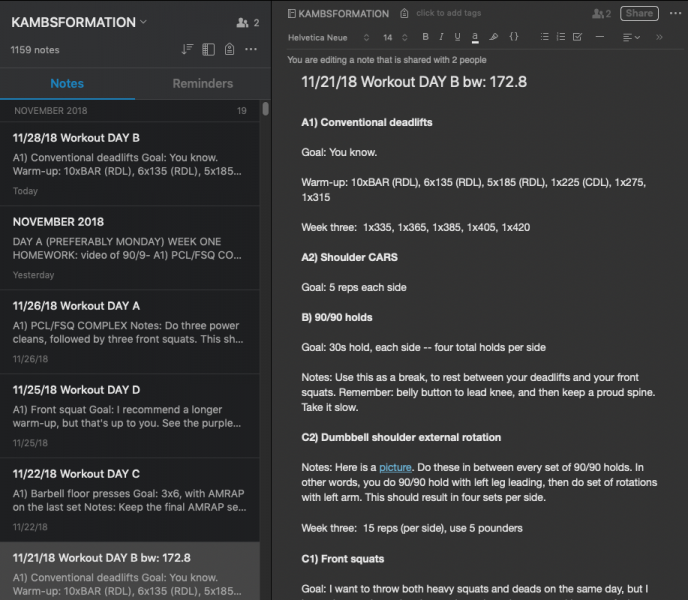
There are many types and styles of personal trainer jobs. It's possible you are unsure where to begin. In this article, you'll learn about the working environment, educational requirements, and salary range. Here you can find out about the working hours as well as the salary range. Continue reading for more information. A new job in a gym is available if you're interested in training new clients. Continue reading to find out more about the job description, and how you can get started.
Work environment
Personal trainers have a unique work environment. Although most personal trainers work from home, the work is very physically demanding. You must be able lift 50 pounds and bend and reach to do this job. A trainer must be flexible and able move around in the different areas. Personal trainers are always on the go, so they must be able to travel and work out without feeling tired.
A personal trainer's work environment can be either a quiet home office or a noisy gym. Although the latter may be more comfortable to some clients, it is important that you consider your client's personality. A gym can offer stability and predictability. Personal trainers need to consider the lifestyles and preferences of their clients when selecting an environment for work. It all depends on their preferences.

Education required
A national certifying body can help you ensure the highest quality services for your clients. There are a variety of organizations offering certifications in this field, including NASM, ACE, and Fitness Mentors. You will be able to begin your career as a personal coach by obtaining a certification. It is important that you note that getting your certification is not free. Also, it can be very expensive. You will still be able to provide the best health care for your clients. You will be more respected as a certified trainer than a noncertified one.
A personal trainer is someone who has attained the age of 18 and has a GED or high school diploma. GED requirements are usually easy to complete. Personal trainers do not require a college degree. However, they must be fit and healthy to perform this job. You can choose to specialize in one type of fitness or focus on your chosen area after you have received the certification.
Salary range
The range of salaries for personal trainer jobs is dependent on experience and location. Trainers working in big cities might charge $100-150 per session. However, those working in smaller towns and rural areas could earn as low $40 per hour. The more experience a personal trainer has, the higher their salary. However, personal trainers generally make around PS20,000 to PS30,000 a year. A personal trainer with at most five years of experience could expect to make approximately $35,000 per year.
A degree can increase the income of an independent personal trainer. A degree allows a trainer to expand their scope beyond training clients and may even lead to writing exercise books and managing large sports teams. An advanced degree increases one's value. In fact, 32% top earners hold an advanced degree. A post-graduation degree can lead to lucrative careers, such as being a military sports trainer.

Working hours
Personal trainers work flexible hours. Some personal trainers work on weekends and late into the night. Others may work twelve hour days building a clientele and recruiting new customers. Working from home or at a public fitness facility is not uncommon, as long as you have a flexible schedule. Even working on cruise ships is possible! For more information, read on. Let's first look at what a personal trainer does.
As a personal trainer, you are the boss. You don't get to dictate how much time you need to spend training your clients. You will decide how long the sessions last. At the beginning, you might work from twelve to fourteen hours per week. While it's okay to work 12-to-14-hour days while you build your client base and other business relationships, you should not put your health at stake by working 12-14 hours per day.
FAQ
What does Exercise do for your Body?
Exercising helps you lose weight, build muscle mass, increase energy levels, reduce stress, and improve sleep quality. The benefits of exercise include improved moods, better self-esteem, increased productivity, and reduced risk of heart disease.
What happens if I don't get enough sleep?
Lack of sleep means that your brain does not receive enough signals to regulate hormones. In turn, this can cause you to eat more and gain weight. Insufficient sleep can lead to stress, which can cause overeating.
Is it safe and legal to exercise in cold conditions?
Outside exercise is encouraged whenever possible. While the air temperature is a major factor in determining whether or not it's safe to exercise outside, it's not the only one. Visibility, wind speed, humidity and precipitation all play a part. Layers of clothing should be worn if you are exercising outside in inclement temperatures.
What are resistance training exercises?
Resistance training is performed with weights and other objects. Lifting weights helps strengthen your arms, shoulders, chest and back, as well as your legs, hips, and core. Resistance training helps build muscle mass and bone density. It also promotes overall strength.
What should I do if I'm working out?
It is important to limit your alcohol intake while you are working out. A moderate amount of alcohol, one drink per day, may be beneficial for endurance during exercise. It may also be beneficial in reducing fatigue and muscle aches that can result from vigorous exercise.
Statistics
- According to the Centers for Disease Control and Prevention, chronic diseases cause 7 out of 10 deaths in the U.S., and treating chronic diseases accounts for 86% of U.S. healthcare costs. (mana.md)
- Globally, 81% of adolescents aged 11-17 years were insufficiently physically active in 2016. (who.int)
- Globally, 28% of adults aged 18 and over were not active enough in 2016 (men 23% and women 32%). (who.int)
- In high-income countries, 26% of men and 35% of women were insufficiently physically active, as compared to 12% of men and 24% of women in low-income countries. (who.int)
External Links
How To
How to Burn Belly Fats Quicker
When trying to lose weight, belly fat is often viewed as a problem. If you look at it, belly fat is actually a positive thing. It is the fat in your stomach that protects your organs. Let's learn how to quickly burn belly fat.
The main factors that contribute to our body fat accumulation are stress and inactivity. Because of its stimulation of the production hormone cortisol, stress can make us feel hungry continuously. Cortisol is responsible for an increase in insulin levels. The insulin then stores extra calories as fat. Insufficient sleep can lead to an increase in appetite and adrenaline release. These extra calories can be broken down by exercising.
There are many different ways to reduce bellyfat. You can choose to try any of these options, depending on your budget. These tips will help you quickly get rid of belly fat.
-
Try to eat less food. Instead of eating three large meals per day, try to eat smaller meals. This way, you'll consume fewer calories overall.
-
Make sure you drink plenty of water. Water flushes out toxins from your body and keeps you hydrated. Water before each meal can help you feel fuller longer and reduce your appetite so that you don't overeat.
-
Avoid snack foods that are unhealthy. If you're looking for quick fixes, snack foods like chips, cookies, candies, etc. This might be tempting. These fattening treats are best avoided as they have too many empty calories and sugar. Choose healthy alternatives like fruits and vegetables, nuts, seeds, whole grains, and seeds.
-
Strength training should be done at least three times per week. Strength training increases muscle mass, which can help you burn more calories while still resting. Strengthening your bones, muscles as well ligaments, joints, tendons, heart and lungs.
-
Walk or stretch regularly. Stretching improves flexibility and mobility which can reduce back pain. Walking is great for burning calories, especially brisk walking for 30 minutes.
-
Reduce alcohol intake. You should cut down on alcohol consumption. It adds no nutritional value to your diet.
-
Lose weight gradually. First, determine your current weight. Add 5%-10% of your total bodyweight to calculate your ideal size. Once you have calculated your target body weight, you can begin to cut calories by 500-1000 calories every day until your goal is reached.
-
Avoid processed foods. These foods are high in salt, sugar, preservatives, and other harmful ingredients. Processed foods are often very convenient but don't provide enough nutrients to keep you healthy.
-
Don't skip breakfast! A good breakfast can improve concentration, memory, as well as energy level. Breakfast should contain protein (like eggs), fibre (like oats), as well as complex carbohydrates (like oatmeal).
-
Have regular bowel movements. Constipation and irregularity cause bloating and gas. Drink plenty of water to prevent gas and fiber ingestion.